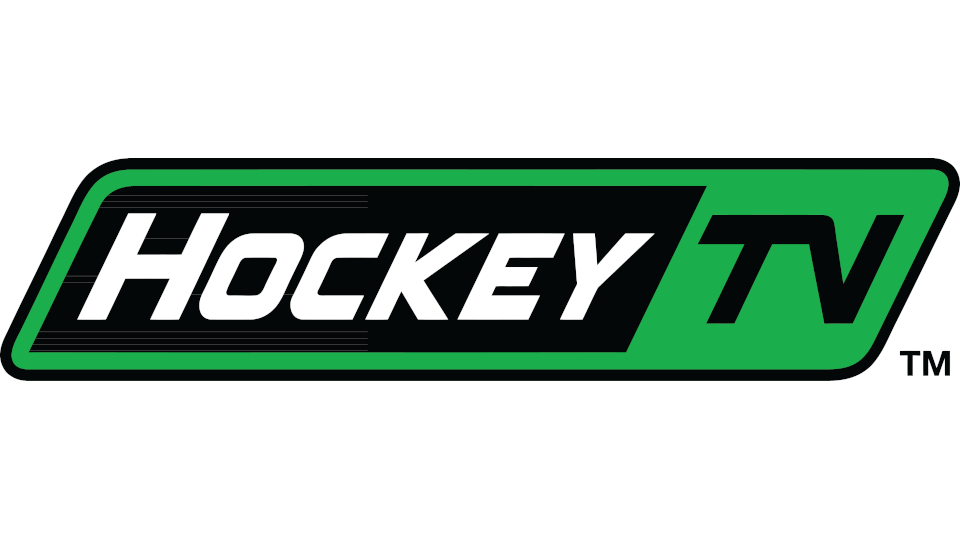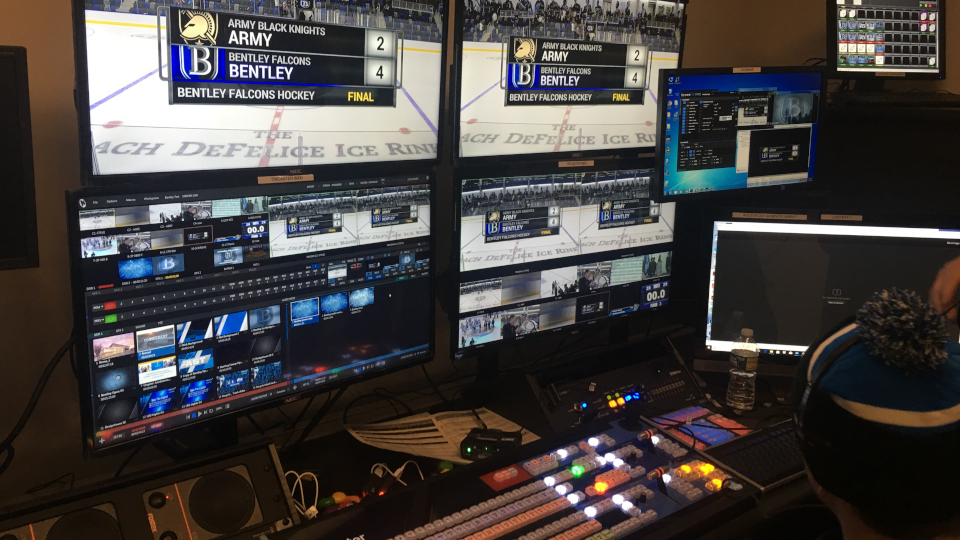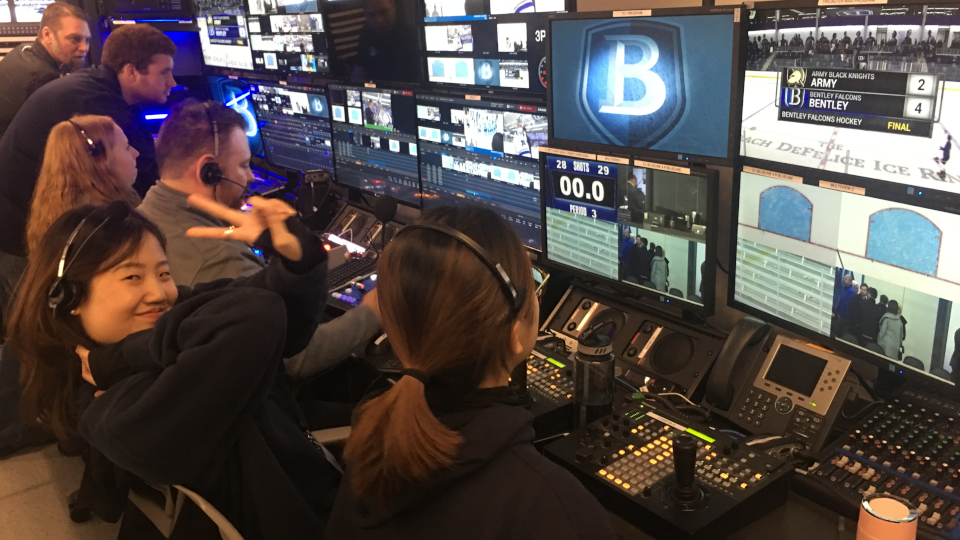From the Rink to a Screen Near You
As one of the four major sports leagues in the United States, the National Hockey League ranks fourth in popularity through the eyes of the sporting public. While it’s obviously the major deal north of the border, Canada has roughly one-tenth of the population of its neighbor to the south.
Those facts don’t usually produce the highest TV ratings.
NBC carries the NHL in the United States while Rogers Communications holds the rights in Canada (along with TVA Sports for French language broadcasts), with sports nets for each franchise. At the lower levels — including the minor leagues, college and juniors — hockey isn’t a huge draw like college football or basketball, for instance.
So, how do the millions of enthusiastic fans in North America get their fix? By buying packages from streaming companies as they support the game at its roots, in a way that the economics of a major league broadcast wouldn’t allow.

STREAM SWITCH
In the American Hockey League (AHL), the Hershey Bears have played before a rabid fan base since 1938. The franchise has always drawn well at home, since 2002 in the 10,500-seat Giant Center; and via its web stream, which will be taken over for the 2018–19 season by HockeyTV.
Aaron Henry, who contracts with the Bears through Great Save Productions, said the move from the sport’s other main streaming provider, NeuLion (which works with a wide swath of industries, sports included), for the 2018–19 season was the team’s next move after an upgrade at the rink three years ago to HD bolstered the fan experience.
Get the TV Tech Newsletter
The professional video industry's #1 source for news, trends and product and tech information. Sign up below.
The team worked with Diversified Systems Inc., of Kenilworth, N.J., on the HD upgrades to the four-sided center ice board, as well as cable boxes, including channel insertion from Radiant Communications Corp., based in South Plainfield, N.J.
Diversified installed a Ross Carbonite switcher, “which led to the creation of an auxiliary bus with different channels: one for feeds in Giant Center, the other for streaming,” Henry said. At the time of installation, the NeuLion feed was encoded at 720p.
“Today, it’s a new 1080i setup with HockeyTV,” which is designing its install to include an encoder that will take in audio-video signals, as well as content from HockeyTV’s smaller cameras, which operate on algorithms and direct the signal to its hub.
Everything the team bought for the HD upgrade is in use, including five Hitachi cameras that are hardwired with triax cabling, plus one wireless. Camera positions include two spots in Section 120 atop the lower level; one in Section 110, behind the goal; one above Section 117 at the Zamboni tunnel; and one above Section 113, for power play setup.
A sixth handheld camera is stationed next to the Zamboni tunnel, where the referees enter the ice at Section 116; there are also two Marshall lipstick cameras mounted behind the goals, with a third at the Bears’ bench.
The Bears took an economical approach to content capture with the ZPlay system from Tightrope Media Systems, which Henry called “a hybrid of EVS and the NewTek 3Play,” which is Windows-based and has similar functions.
ON THE JOB LEARNING
John Mitchell, owner of Digital Multimedia Solutions in Belmont, Mass., is working in a new facility at Bentley University in Waltham, Mass., which opened its new 2,000-seat arena earlier this year. The arena features a Nevco video board and a user-friendly broadcast facility, with its game stream provided via Stretch Internet.
“The control room is run by students,” said Mitchell, who also works for the NHL’s Boston Bruins (and the NBA’s Boston Celtics) at TD Garden. “The kids can learn to run replays in 5–10 minutes, which is great, because the challenge in this part of the business is getting the students involved in a learning environment and communicating as a team, with professionals,” he said.
[Read: Marshall POV Cameras Give New Look to Harvard Sports]
The game presentation uses up to 10 cameras, with four Panasonic AW-HE130s and 40S, including two over both goals and two at each blue line; and six Panasonic P-2HD robotic cameras for shoulder or tripod mounts, with Fujinon HA Premier series lenses.

Fiber is built out to five camera locations, with the setup featuring a Blackmagic 72x72 universal router and two switchers: the NewTek TriCaster TC-1 for the broadcast and TriCaster 8000 for inside the in-house show. The two replay machines are also NewTek designs, the 3Play 4800 and the 3Play 440.
Bentley, a member of the Atlantic Hockey collegiate conference, employs “the higher end of the more affordable equipment,” said Mitchell, noting his company has done similar installs at various arenas in the northeast, that don’t require more experienced crews to operate.
“We used to need racks and racks of equipment to make this all work,” Mitchell said. “The NewTek NDI is the largest router in the world ― without having a router.
“This,” he added, “is all about the future and IP video.”
“THE STANDARD”
In the hockey hotbed of Regina, Saskatchewan, Ryan Borowko and his crew bring junior hockey action to the locals in a broadcast facility he said is “great, and we’re making it better.” The technical producer of the Western Hockey League’s (WHL) Regina Pats said setup at the 6,400-seat Brandt Centre is already “the standard of the league for what a video operation should be.”
The Pats’ 10-camera show includes three hardwired and one wireless Sony PMW 320 cameras, plus one robocam under the score clock for on-ice shots, another in the arena’s northwest corner for wide-angle shots during camera switches, and two in-board cameras in the northwest and southwest bottom corners, straight back from the face-off circles that are about six inches off the ice. There are also overhead cameras above both goals, which are replay-only.
Borowko and company switch the show with a Blackmagic A-10, with the NewTek 3Play 4800 for replays. But what sets this setup apart from other WHL teams is the MotionRocket LaunchPad, an all-in-one automatic clip server and playback source for all graphics and videos, including the scorebar atop the scoreboard.
“It’s one of the most unique and versatile platforms available,” he said. “If you can’t afford a Chyron, MotionRocket is your only other option, because you can control up to five surfaces from each machine, as well as handle data ingest from any source, be it Daktronics, OES [which is used by most WHL arenas] or Nevco.”

STREAMING RIGHT ALONG
While these three arenas feature some of the finer facilities in organized hockey, they are somewhat the exceptions, as teams have varying equipment rosters, according to John Fiore, director of HockeyTV in Waterloo, Ontario, which streams the games from teams in about two dozen leagues.
“Some teams do multicamera shoots with as many as five cameras,” Fiore said, “and others just have the one camera at center ice. Some teams offer elaborate broadcasts with pre- and post-game shows, and various bonus content. That all depends on what each team can pay or how many volunteers they have available.”
The job of HockeyTV is “to provide the teams with necessary hardware, which is proprietary, for them to be able to stream from their buildings,” he said.
“No two venues are the same,” Fiore said, “so whatever they are allowed to do and can do varies from team to team, venue to venue.”
Mark R. Smith has covered the media industry for a variety of industry publications, with his articles for TV Technology often focusing on sports. He’s written numerous stories about all of the major U.S. sports leagues.
Based in the Baltimore-Washington area, the byline of Smith, who has also served as the long-time editor-in-chief for The Business Monthly, Columbia, Md., initially appeared in TV Technology and in another Futurenet publication, Mix, in the late ’90s. His work has also appeared in numerous other publications.

